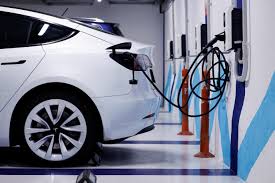10 smart tips for choosing your first electric vehicle
Switching to an electric vehicle (EV) is an exciting and forward-thinking decision, but with so many options on the market, choosing your first EV can be overwhelming.
Whether you're motivated by environmental concerns, rising fuel prices, or the appeal of cutting-edge technology, selecting the right EV requires careful consideration. Here are 10 smart tips to help you navigate the process and find the perfect electric vehicle for your needs.
1. Understand your driving needs
Before diving into the world of electric vehicles, take some time to evaluate your driving habits. Consider how far you typically drive each day, your regular routes, and the availability of charging stations along the way. If you have a long commute or frequently take road trips, you'll need an EV with a longer range. On the other hand, if you mainly drive short distances around town, a smaller, more affordable EV might be sufficient.
2. Research EV models and ranges
Electric vehicles come in various shapes, sizes and ranges. Start by researching different models to understand their range capabilities. Most modern EVs offer ranges between 150 to 350 miles on a single charge, but this can vary based on driving conditions and habits. Websites like the Office for Zero Emission Vehicles provide comprehensive information on EV ranges and other specifications.
3. Consider total cost of ownership
While the upfront cost of an EV can be higher than that of a conventional car, it's essential to consider the total cost of ownership.
EVs typically have lower maintenance costs since they have fewer moving parts and no need for oil changes. Additionally, electricity is generally cheaper than petrol or diesel.
Factor in potential savings from government grants, reduced fuel and maintenance costs, and lower road tax over time to get a complete picture of the financial benefits.
4. Explore charging options
Charging infrastructure is a critical aspect of owning an electric vehicle. There are three main types of charging: slow charging, fast charging, and rapid charging.
Slow charging uses a standard 3-pin plug and is the slowest option, taking up to 24 hours for a full charge.
Fast charging requires a dedicated home charger (7-22kW) and can fully charge an EV in 4-8 hours.
Rapid charging is the quickest, providing an 80% charge in about 30 minutes but is primarily only available at public charging stations.
Determine what charging options are available at your home, work, and in your area.
5. Check for incentives and grants
The government and Local Authorities offer incentives and grants to make EVs more affordable. These can include the Plug-in Car Grant, which offers up to £2,500 off the cost of an eligible new EV, and grants for installing home charging points.
Additionally, electric vehicles are exempt from Vehicle Excise Duty (road tax) if they cost less than £40,000.
Check resources local council sites for available incentives, too.
6. Test drive different models
Just like with any car purchase, it's crucial to test drive different EV models to see which one feels right for you.
Pay attention to the driving experience, including acceleration, handling and comfort. Electric vehicles often have instant torque, providing a unique and enjoyable driving experience. Also, familiarise yourself with the interior features, 'infotainment' system, and cargo space to ensure that the vehicle meets your lifestyle needs.
7. Evaluate battery life and warranty
The battery is one of the most critical components of an electric vehicle. Research the battery life and warranty of the models you’re considering. Most manufacturers offer warranties covering the battery for eight years or 100,000 miles, but this can vary.
Understanding the expected battery lifespan and warranty coverage can provide peace of mind and help you avoid unexpected expenses further down the line.
8. Consider the environmental impact
One of the main reasons that we choose electric vehicles is to reduce our environmental footprint.
EVs produce zero tailpipe emissions, but their overall environmental impact depends on how the electricity used to charge them is generated. If possible, opt for green energy sources or consider installing solar panels at home to charge your EV. This way, you can further reduce your carbon footprint and make your transition to an electric vehicle even more sustainable.
9. Assess connectivity and smart features
Modern electric vehicles are equipped with advanced technology and connectivity features.
Look for models that offer: smartphone integration, over-the-air software updates, adaptive cruise control, lane-keeping assist, and automatic emergency braking. These features can enhance your driving experience, improve safety, and ensure that your vehicle remains up-to-date with the latest software improvements.
10. Plan for the future
As you choose your first electric vehicle, consider how your needs might change in the future. EV technology is rapidly evolving, with new models offering longer ranges, faster charging times, and more advanced features.
Think about your long-term transportation needs, potential lifestyle changes, and advancements in charging infrastructure. Investing in an EV that can adapt to your future requirements ensures that your purchase remains a smart choice for years to come.
As the automotive industry continues to innovate, the shift to electric vehicles offers an exciting opportunity to embrace cleaner, more efficient transportation. Happy driving!
Carl Dodd, Property Revolutions Ltd.


